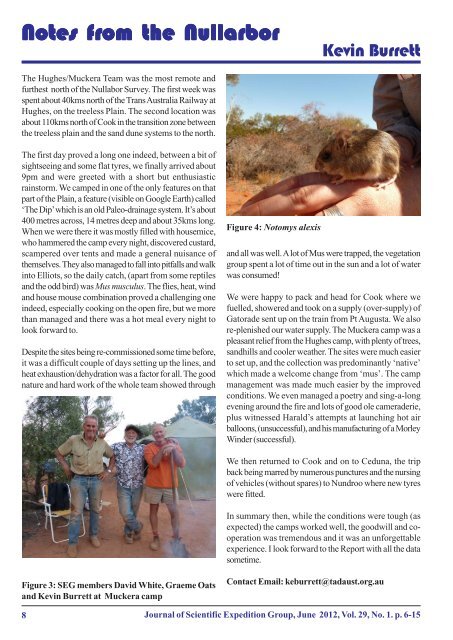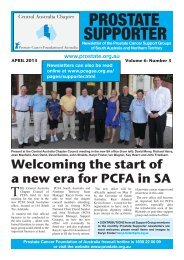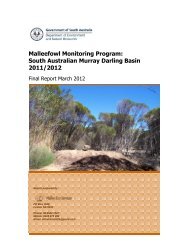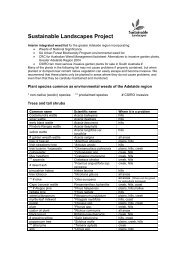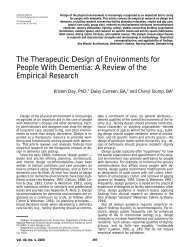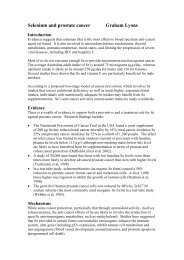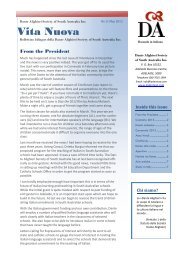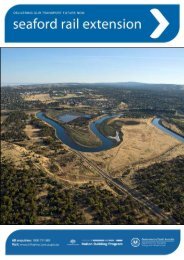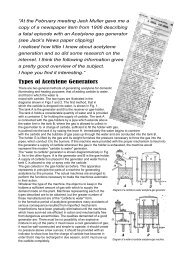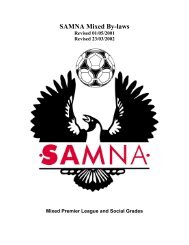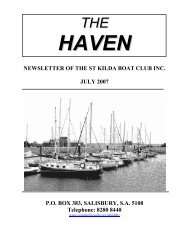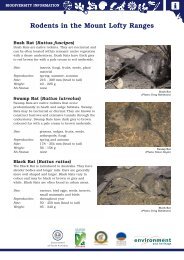SEGments - Communitywebs.org
SEGments - Communitywebs.org
SEGments - Communitywebs.org
Create successful ePaper yourself
Turn your PDF publications into a flip-book with our unique Google optimized e-Paper software.
Notes from the NullarborKevin BurrettThe Hughes/Muckera Team was the most remote andfurthest north of the Nullabor Survey. The first week wasspent about 40kms north of the Trans Australia Railway atHughes, on the treeless Plain. The second location wasabout 110kms north of Cook in the transition zone betweenthe treeless plain and the sand dune systems to the north.The first day proved a long one indeed, between a bit ofsightseeing and some flat tyres, we finally arrived about9pm and were greeted with a short but enthusiasticrainstorm. We camped in one of the only features on thatpart of the Plain, a feature (visible on Google Earth) called‘The Dip’ which is an old Paleo-drainage system. It’s about400 metres across, 14 metres deep and about 35kms long.When we were there it was mostly filled with housemice,who hammered the camp every night, discovered custard,scampered over tents and made a general nuisance ofthemselves. They also managed to fall into pitfalls and walkinto Elliots, so the daily catch, (apart from some reptilesand the odd bird) was Mus musculus. The flies, heat, windand house mouse combination proved a challenging oneindeed, especially cooking on the open fire, but we morethan managed and there was a hot meal every night tolook forward to.Despite the sites being re-commissioned some time before,it was a difficult couple of days setting up the lines, andheat exhaustion/dehydration was a factor for all. The goodnature and hard work of the whole team showed throughFigure 4: Notomys alexisand all was well. A lot of Mus were trapped, the vegetationgroup spent a lot of time out in the sun and a lot of waterwas consumed!We were happy to pack and head for Cook where wefuelled, showered and took on a supply (over-supply) ofGatorade sent up on the train from Pt Augusta. We alsore-plenished our water supply. The Muckera camp was apleasant relief from the Hughes camp, with plenty of trees,sandhills and cooler weather. The sites were much easierto set up, and the collection was predominantly ‘native’which made a welcome change from ‘mus’. The campmanagement was made much easier by the improvedconditions. We even managed a poetry and sing-a-longevening around the fire and lots of good ole cameraderie,plus witnessed Harald’s attempts at launching hot airballoons, (unsuccessful), and his manufacturing of a MorleyWinder (successful).We then returned to Cook and on to Ceduna, the tripback being marred by numerous punctures and the nursingof vehicles (without spares) to Nundroo where new tyreswere fitted.In summary then, while the conditions were tough (asexpected) the camps worked well, the goodwill and cooperationwas tremendous and it was an unf<strong>org</strong>ettableexperience. I look forward to the Report with all the datasometime.Figure 3: SEG members David White, Graeme Oatsand Kevin Burrett at Muckera campContact Email: keburrett@tadaust.<strong>org</strong>.au8Journal of Scientific Expedition Group, June 2012, Vol. 29, No. 1. p. 6-15


